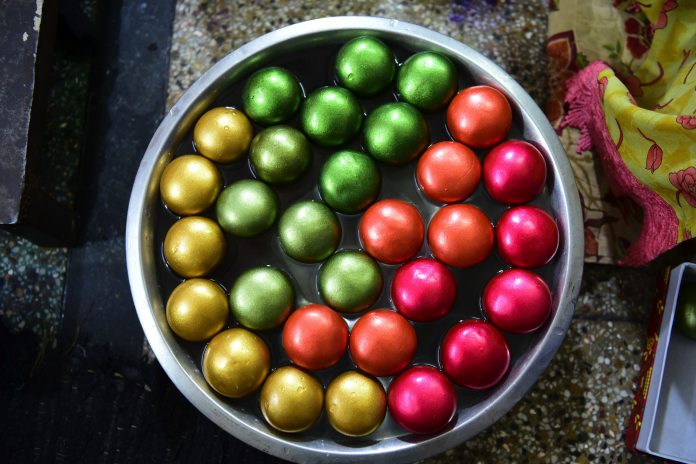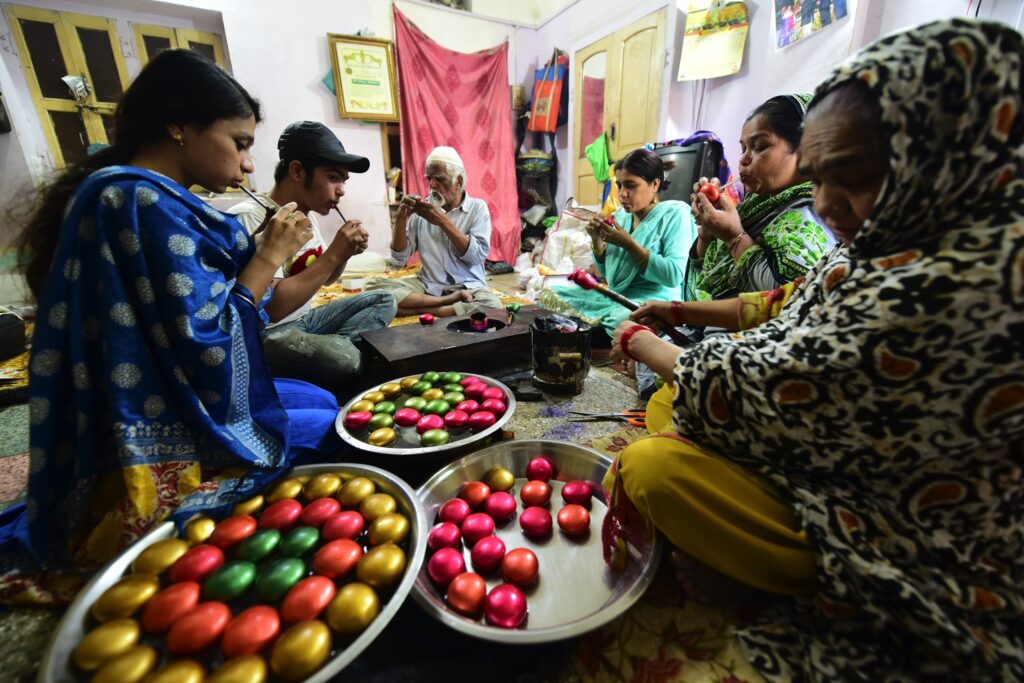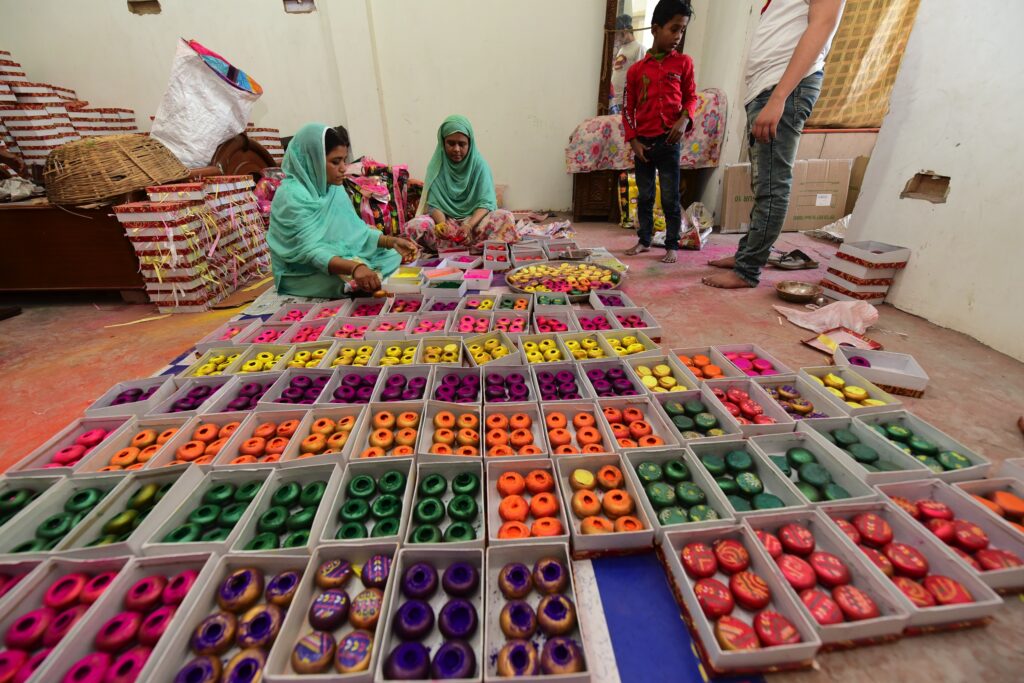Jaipur, RAJASTHAN :

Dozens of Muslim artisans in Jaipur have kept the 400-year-old traditional art form of Gulal Gota alive.
Jaipur :
The narrow lanes of Jaipur’s walled city are abuzz with festive fervour ahead of Holi, the festival of colours to be celebrated on March 17. Twenty-eight-year-old Amjad Khan, a seventh-generation lac bangle maker is busy selling Gulal Gotas (lac balls filled with colours) at his shop situated in the Maniharon-Ka-Raasta inside the Tripolia Bazar in the walled city of Jaipur.
Every year, two months ahead of the Holi, Amjad along with his eight siblings starts making the lac balls and fills them with colours before packing them in boxes. Amjad is not alone. Dozens of artisans in Jaipur have kept this traditional art form alive, which is as old as 400 years.
Gulal Gota is made with unique craftsmanship and compliments the festival of colours. After completing his basic education, Amjad learnt this art from his father late Babbu Khan. The family does not earn much from the sale of Gulal Gota but they don’t want to give up on this traditional art form that they have inherited from their forefathers.

“In the last two decades and especially from the last two years because of the pandemic, the demand for Gulal Gota has come down a bit but for the love of this art form, we want to keep it alive and pass this to our next generation irrespective of gender. My siblings, mother and late father used to participate. It brings families together,” Amjad shared.
“Every year for two months our entire family gets busy making Gulal Gotas. It is an art to add colours in the lac containers. It is again re-heated and then, with the help of a steel rod and the air is blown into the small balls. We fill it later with organic colours. We are not even earning 50 per cent of what we are spending to make these balls but we are only doing to make the Holi special,” Amjad said.
Each ball weighs from 10 to 20 grams and costs anywhere between Rs 100 to 150.
The Gulal Gotas are still popular with traditional families and are used at the famous Govind Dev Ji temple in Jaipur. According to the popular view of historians, Sawai Jai Singh II brought the artists from Amber to the walled city and developed the unique art of Gulal Gota. Even today during the annual Holi celebration at the city palace, revellers throw these balls at each other and get smeared with colours without hurting anyone.

Apart from states such as Madhya Pradesh, national capital New Delhi and Uttar Pradesh, it is shipped to other parts of the world including Canada, Britain, Australia, Spain, France and Nepal. However, packaging the balls needs careful handling to avoid the risk of the balls bursting in their wrapping. The balls are sold in packs of 6 or 8.
Those involved in the production of these balls belong to the Muslim community. Awaz Mohammed, a national award-winning artist who has been in this field for seven generations said, “This is a beautiful gesture and brings two communities together. The only sad part is that for an artist the sale from Gulal Gotas is not enough to sustain their livelihood.”
Awaz’s daughter Gulrukh Sultana who is a trained lac artist not only learnt the art from her father but is also sharing the skill at national institutes across India such as NIID, JJ School of Arts, Pearl Academy etc.
“Making lac artifacts is an intricate and unsafe job, but I want to share this art and skill with the future generation. It is the passing of tradition and heritage Jaipur is proud of. Lac is delicate and it needs proper handling. I have trained so many artists in different cities and also given demonstrations internationally,” said 35-year-old Sultana, a recipient of the state award in 2009 and a UNESCO award in 2013.
Looking at the market and interest of the younger generation, Sultana is apprehensive about whether this art could be saved. “Since there is not much earning, it is less attractive for youngsters to learn this skill but at the same time the government should come up with lucrative initiatives and ensure the art is kept alive”, she added.
Tabeenah Anjum is a journalist based in Rajasthan reporting on politics, gender, human rights, and issues impacting marginalized communities. She tweets at @TabeenahAnjum
source: http://www.twocircles.net / TwoCircles.net / Home> Lead Story / by Tabeenah Anjum, TwoCircles.net / March 16th, 2022








